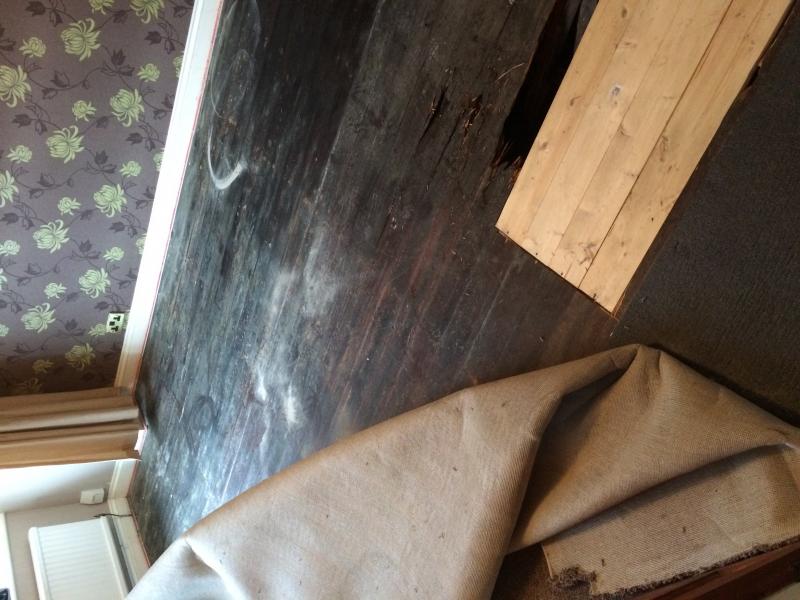Hi all,
We have just bought a property (built c. 1930-1950) and when we ripped the carpet off in the front room, the floorboards were very damp, black (rotting?) and could be kicked through fairly easily. The timber joists underneath were also black, damp and snapped easily as well. Although the concrete beneath that was damp, there was no puddles or visibly pooled water anywhere.
Surprisingly the hallway a couple of inches away from this appears to have the house's original floorboards in perfect condition. The front wall, to which houses the front room, does not appear to have had a DPC injection.
After speaking to neighbours, the area has a high water table and the drainage around the house is terrible (broken land drains and non existent connections) with most of the area around the property comprising of clay.
I have been advised by non-Professionals that cementing the whole ground floor may be the best option whereas others have advised that if we can fix the source of the damp problem we can simply replace the timber, which would be cheaper.
Has anyone had anything similar and know what the cause may be? The previous owner was a cowboy and it could have been an internal leak also. Any advice would be greatly appreciated.
Cheers,
We have just bought a property (built c. 1930-1950) and when we ripped the carpet off in the front room, the floorboards were very damp, black (rotting?) and could be kicked through fairly easily. The timber joists underneath were also black, damp and snapped easily as well. Although the concrete beneath that was damp, there was no puddles or visibly pooled water anywhere.
Surprisingly the hallway a couple of inches away from this appears to have the house's original floorboards in perfect condition. The front wall, to which houses the front room, does not appear to have had a DPC injection.
After speaking to neighbours, the area has a high water table and the drainage around the house is terrible (broken land drains and non existent connections) with most of the area around the property comprising of clay.
I have been advised by non-Professionals that cementing the whole ground floor may be the best option whereas others have advised that if we can fix the source of the damp problem we can simply replace the timber, which would be cheaper.
Has anyone had anything similar and know what the cause may be? The previous owner was a cowboy and it could have been an internal leak also. Any advice would be greatly appreciated.
Cheers,


